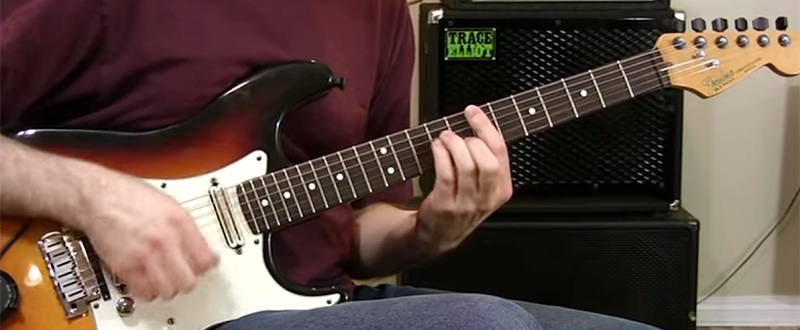Barre chords may be challenging, but they are one of the most essential chord types to learn. The skill behind making them involves flattening index or ring fingers of the fretting hand. For some, this may not be easy to do, but once learned, barre technique allows for string coverage in a way that duplicates the job of the nut and allows most of the open chords to become movable.
Q: I was wondering if you could do a video on barre chords? When I try and do them some of the strings don’t get pressed down. My friends say I need to change my technique, others say, my fingers just need strengthening. Please help. Also thanks for making awesome videos.
– Andrew, San Diago, CA.
A: Thanks for writing in. Barre chords are a very important part of rhythm guitar. They can be used to play chord patterns for several kinds of chord qualities with the most popular ones being Major and Minor barre chords.
For the most part, guitar players will use barre chord patterns constructed with the root notes situated from off of the 6th and 5th guitar strings.
It is considered essential that rhythm guitar players across all styles of music become familiar with and technically proficient at performing all barre chord types.
Having skill with barre chords will allow a guitarist to have more versatility with being able to perform different songs in all of the key signatures.
IMPORTANT BARRE CHORDS:
There are four important major and minor barre chords which are vital for every guitarist to know. Two of them have 6th string root notes and the two others are built from off of the 5th string.
We will begin with two barre chords built from 6th string.
Sixth String Root Barre Chords:

Fifth String Root Barre Chords:

IMPORTANT: The 5th string root Major barre chord can sometimes cause players trouble. For some guitar players, getting the ring finger to curve inward can be difficult. If you find this chord pattern difficult, work diligently at perfecting its sound and take your time learning this shape. It will get easier.
TIP: Try practicing barre chords that you find to be difficult higher up on the guitar fingerboard. With dedicated practice, things will slowly improve. Over time your hand will gain better control over the application of barre chord shapes.
CONCLUSION:
Barre chords are considered to be an “Intermediate” level chord, and the sooner you start integrating them the better. They are generally best practiced after having learned all of the basic open chords on the guitar.
Since they are an essential chord type for more control over all of the wide choices of harmony used across the different musical keys, it is important not to ignore them. Some chord types that occur in different styles of music will actually require barre chord patterns.
Technically, a barre chord can occur anyplace on the guitar neck (off of any root), and for that reason they are able to make quick work out of establishing unique chord types, such as sharp and flat chord names.
As a rhythm guitarist, if you just so happen to get tossed a song that exists in a key like “A♭ Major,” (A♭, B♭, C, D♭, E♭, F, and G), knowing barre chords can offer instant access to any chord name off of that key’s four flat tones.
Keep in mind that for some guitar players barre chords can seem like a technical nightmare at the beginning. But, (like anything else on guitar that poses a challenge), be persistent with your practice and stay determined. Over a period of time, every guitarist can bring barre chords up to a high level of technical proficiency.
TIP: You may notice that certain guitar players will find barre chords a total snap and barre chord use will come together easily for them. If that is not you, there’s no need to worry. Whether you learn them in a day, or if it takes you a month, (or three) that’s just the way it is with learning to barre!
